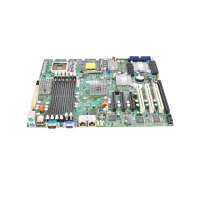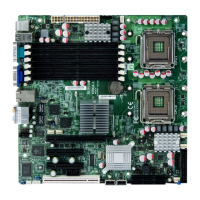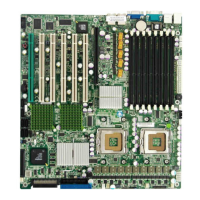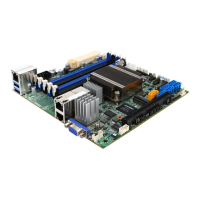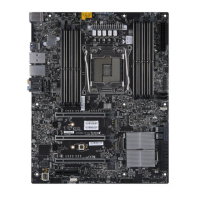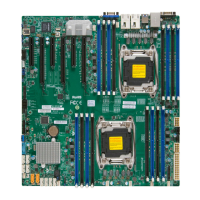Chapter 1: Introduction
1-9
1-2 Chipset and Processor Features Overview
Built upon the functionality and the capability of the Intel 5100 chipset, the
X7DCU motherboard provides the performance and feature set required for dual
processor-based high-end computer systems with confi guration options optimized
for intensive computing, high energy-effi ciency and complex business applications.
The 5100 chipset supports single or dual Intel Xeon 64-bit Quad-Core/Dual-Core
5400/5300/5200/5100 Sequence processors with front side bus speeds of up to
1333 MHz. The chipset consists of the 5100 Memory Controller Hub (MCH), Intel
I/O Controller Hub (ICH9R) and the I/O subsystem.
The 5100 Memory Controller Hub (MCH)
The Intel 5100 MCH chip is designed for symmetric multiprocessing across two
independent front side bus interfaces. Each front side bus uses a 64-bit wide,
1333/1066 MTS data bus capable of transferring data at 8.5/10.6 GB/s for a total
bandwidth of 17/21.3 GB/s. The MCH supports a 36-bit wide address bus and up
to four DDR2 667 MHz/533 MHz DIMM modules, providing a total memory capacity
of up to 48 GB.
The 5100 MCH also provides two x4 PCI-Express interfaces and one x4 DMI
Interface to the ICH9R. Each PCI Express port on the MCH provides 4 GB/s bi-
directional bandwidth if confi gured as a x8 port, or 2 GB/s bi-directional bandwidth
if confi gured as a x4 port.
The Ninth Generation I/O Controller Hub (ICH9R)
The I/O Controller ICH9R provides the data buffering and interface arbitration re-
quired for the system to operate effi ciently. It also provides the bandwidth needed
for the system to maintain its peak performance. The Direct Media Interface (DMI)
provides the connection between the MCH and the ICH9R. The ICH9R supports
up to two PCI-Express x8 or x16 slots, six Serial ATA ports and six USB 2.0 ports.
In addition, the ICH9R offers the Intel Matrix Storage Technology which provides
various RAID options for data protection and rapid data access. It also supports the
next generation of client management through the use of PROActive technology in
conjunction with Intel's next generation Gigabit Ethernet controllers.
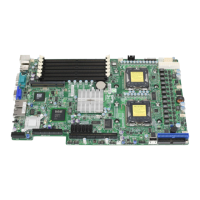
